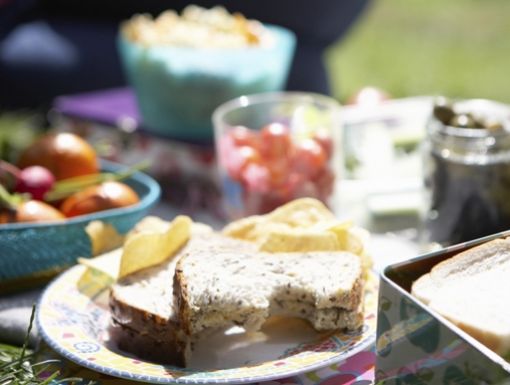
5 Food Safety Tips to Practice in Your Kitchen
Healthy eating is more than eating a balanced diet and nutrient-dense foods. It also includes implementing food safety practices to avoid foodborne illnesses. According to the Centers for Disease Control, 1 in 6 Americans get sick from food poisoning annually. Most foodborne illnesses are preventable with proper food cleaning, cooking and appropriate storage. Keep reading for the top five most effective ways to protect you and your family from foodborne illness.
1. Wash your hands and surfaces often
Germs can survive in many places in your kitchen, such as on your food, cutting boards and utensils. It’s important to use proper handwashing techniques, especially before, during and after preparing food. Always wash your hands after handling raw meat, seafood and eggs. For best results, scrub the front and back of your hands and fingers, in between your fingers and your fingernails for at least 20 seconds with plain soap and water.
Wash your cutting boards, dishes, utensils and countertops with hot, soapy water after cooking and handling raw meat, seafood and eggs. Also, wash dish cloths frequently in the hot cycle in your washing machine. Lastly, wash your fruits and vegetables under running water. Do not wash meat, poultry and eggs.
2. Don’t cross-contaminate
When preparing food, use two separate cutting boards, one for produce and one for raw meat and seafood. You should also use separate plates and utensils for cooked and raw food. Wash your plates, utensils and cutting boards after every use with hot, soapy water.
3. Cook food at the right temperature
Your meat is safely cooked when the internal temperature is high enough to kill illness-causing germs. The safest method to ensure the appropriate temperature is to insert a food thermometer in the thickest part of the meat. Make sure to not touch the bone, fat, or gristle in order to get an accurate reading. This chart from FoodSafety.gov has a handy list of safe minimum cooking temperatures.
If you are not eating your food right after cooking, you should keep it warm at 140˚F or above. If you are microwaving food, make sure to follow the instructions on the food label. Stir food in between heating, and if it recommends your food to sit for an allotted time, let it rest for those minutes.
4. Refrigerate food properly
You should refrigerate perishable foods within 2 hours, and your refrigerator temperature should be below 40˚F. Bacteria multiplies in food the quickest at room temperature, which is between 40˚F and 140˚F. You should thaw frozen food safely in your refrigerator, under cold water or in your microwave. Don’t thaw your food on your countertop. Lastly, try eating refrigerated leftovers within 3 to 4 days after being prepared.
5. Storing food safely
Always read food label instructions. If it states to refrigerate after opening, do it! Also, check the expiration date on packaged food.
A food-related illness can be life-threatening for individuals with health problems. Keep these tips in mind when preparing and storing food to reduce you and your family’s risk of catching a stomach bug.


